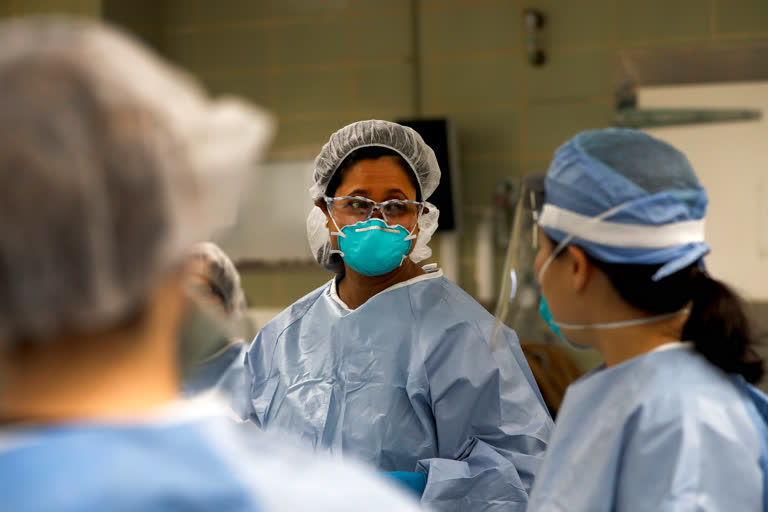Chicago:The Chicago area’s chief medical examiner starts her day with a numbers problem: how to manage three times the number of deaths as before the coronavirus pandemic with the same number of pathologists.
On a recent morning when The Associated Press got exclusive access to the Cook County Medical Examiner’s Office for the day, Dr. Ponni Arunkumar scanned a list of 62 new death cases. The average last year was 20 a day.
“We’ve never gone through anything like this,” she said of the workloads.
Forty of the 62 cases were coronavirus deaths. The oldest to die was a 105-year-old whose obituary described her as a White Sox fan who loved dancing. The youngest was a 53-year-old man who was jailed for allegedly blinding someone in one eye during a barroom brawl.
Medical examiners worldwide face similar challenges, and some are buckling under the emotional strain. But there was no sign of that at the Cook County facility, where employees seemed to be coping well with the historic surge in deaths. The pandemic has only deepened their sense of camaraderie, said the office’s director of fatality management, who oversees a temporary morgue set up off-site to handle the influx of corpses.
“We lean on each other,” Victoria Raspante said.
The 45-year-old Arunkumar has an air of calm about her. Soft-spoken and quick to smile, she has a knack for keeping those she supervises at ease.
According to figures updated Tuesday, her office has handled 5,323 cases already this year, 2,551 of them COVID-19 deaths since the first confirmed coronavirus death in mid-March. It had 6,254 deaths for all of 2019. Her 18 pathologists have sometimes worked 12-hour days, seven days a week.
The hope was that stay-at-home orders would sharply reduce gun deaths in Chicago, which has had more homicides than Los Angeles and New York combined for successive years. A drop-off in killings would help keep caseloads at more manageable levels.
That hasn’t happened.
The office has had 111 homicide cases since mid-March when the pandemic began in the county compared to 113 over the same period last year. One of the 22 non-COVID cases this day is a 21-year-old man who was killed in a drive-by shooting as he sat on a porch.
At 8:30 a.m., Arunkumar and six fellow pathologists began autopsies on shooting victims and others whose cause of death wasn’t clear.
She pointed to a bullet hole in the shoulder of the man who was killed in the drive-by, his bloody clothes nearby. Another pathologist retrieved the bullet through the wound.
Between autopsies, Arunkumar walked into the facility’s main morgue, where around 250 bodies lined rows of floor-to-ceiling shelving. It was filled to capacity.
Also Read:Watch: NY nurse details challenges working in ICU
Downstairs, Rebeca Perrone stacked 24 boxes of unclaimed cremated remains on shelves that already had 500 others. Some of those cremated were homeless. Others lived alone, estranged from their families.
More remains are going unclaimed these days — a sign that more families can't afford the $250 collection fee because of the economic turmoil caused by the pandemic, said Perrone, who arranges funerals for the unclaimed dead and helps poorer families find resources for burials.
Perrone refused to complain about her heavier workloads. Her job sometimes includes informing relatives that a loved-one has died.
